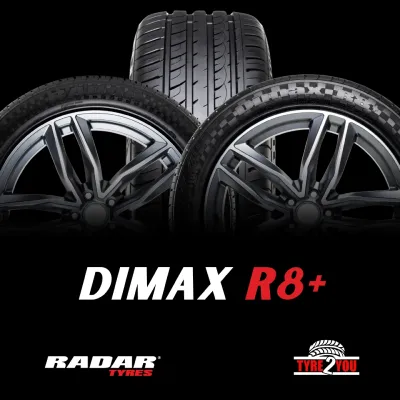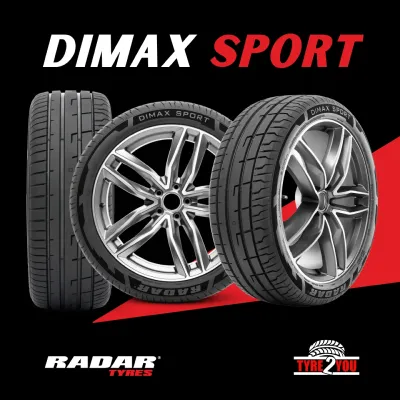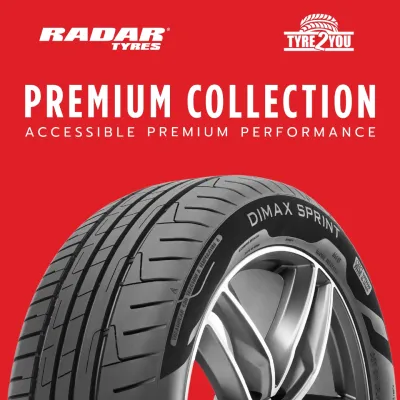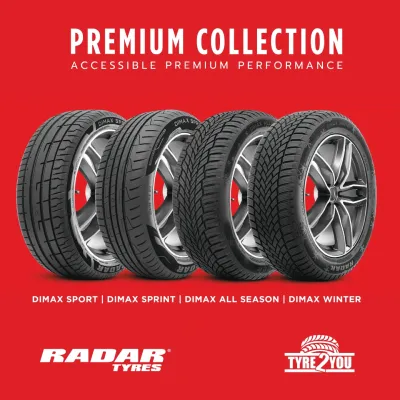At Tyre2you we are currently replacing many caravan tyres as people are preparing to use the caravans in the summer months. Caravans do a low annual mileage – on average around 2,000 miles a year, so it would take many years of use to wear out the tread.
However, a couple of factors can make them deteriorate in a different way, even with careful use:
- All tyres age and deteriorate due to exposure to sunlight and atmosphere, even if not used.
- Caravan tyres can suffer fatigue due to the repetitive small impacts they suffer in everyday use.
- Since caravans are often left standing for long periods of time, the tyres become more susceptible to flat spots which can lead to punctures.
It should go without saying that tyres which are damaged or worn to the legal minimum tread depth (1.6mm) must be replaced immediately. Caravan tyres need regular replacement, irrespective of their visual appearance. Tyre2you recommend that you replace your caravan tyres when they reach five years old and should never be used when more than seven years old.
If your tyres need a high inflation pressure (50psi or more), you should check regularly for signs of deterioration from three years old and should not be used when they reach five years.
Remember – the tyres age starts from when it was made, not from when it was fitted. The four-digit tyre age code is usually located in a window on the tyre sidewall. The first two digits of the code represent the week of production during the year (from 1 to 52) while the second two digits represent the year of manufacture.
Tyre2you recommendations on how to care for your caravan tyres and wheels:
Tyres:
- Check inflation pressure regularly
- Examine tyre treads and remove stones regularly
- Remove any oil, fuel or paint
- Check the tread wear regularly – the legal minimum is 1.6mm across the central three quarters of the tread breadth around the entire circumference of the tyre. Major tread wear during the normal life of the tyre may indicate a more serious problem, such as incorrect loading, wrong inflation pressure or even poor wheel alignment. Tyres which are operated in an overloaded condition may also show uneven wear across the width of the tread. Even a small variation in wear across the width (as little as 1mm according to tyre industry sources) is a possible indication of overloading.
- Replace any tyre that has blistered, ruptured or been cut penetrated by an object. Developing problems can sometimes be detected most easily by running a gloved hand over the surface to the tyre, feeling for any raised or uneven areas.
- Establish a routine to check tyre condition each time you check pressures. Do not forget the side of the tyre facing away from you, although to check this surface thoroughly, you will periodically need to remove the wheels from the vehicle.
- If you’re not going to use your caravan for a lengthy period of time, we recommend that your remove the wheels and tyres and store them at normal inflations pressure in a cool, dry place and protect them from direct sunlight, sources of hear and fuel/oil spillages. Cover with a natural material, not plastic, for protection. Note that the terms and conditions of your caravan insurance and/or storage site might prevent you from removing the wheels during storage. This may either be to facilitate the use of security devices, or conversely to ensure the caravan remains moveable to provide access within the storage area. If wheels must be left on, rotate them regularly, so that the caravan’s weight does not rest on one area of the tyre all the time
- Check the condition of your tyre valves. Make sure the valve stem is undamaged and is correctly aligned with the valve aperture in the wheel, and not distorted when the wheel trim (if fitted) is installed. Be sure that all valves have suitable valve caps. Valve caps that have sealing washers offer better protection against dirt and dust. Check the valve is not leaking especially after measuring the inflation pressure. Make sure the valve has closed again correctly - if in doubt, fit a new valve.
Wheels:
- Check the rim is clean and free from rust (if it is steel), burrs, cracks and distortions.
- Check that the stud holes are not damaged or elongated and are clean before fitting the studs.
- Follow a correct procedure for refitting wheels after removal.
- Steel wheels can be painted to freshen their appearance after a few years’ use but be careful not to obscure any damage or non-cosmetic deterioration under a layer of paint. Do not get paint on the tyre itself, on the mating surface between the wheel and the hub, nor on the stud holes. Alloy wheels can be refurbished by polishing and lacquering, but this is a job best left to professional refinishers.
- Plastic wheel trims on steel rims are notorious for being insecure. To avoid annoying (and potentially dangerous) losses, you can use plastic cable ties to secure the trim to the wheel. These can be easily cut with a sharp knife or wire cutters if the trim needs to be removed to get access to the wheel fixings
Tyre2you are happy to come to you, with our mobile tyre fitting service we can supply and fit new tyres at your home, for your caravan making sure you are safe on your caravanning adventures.








